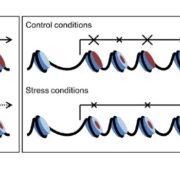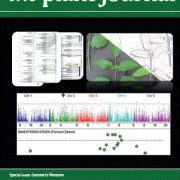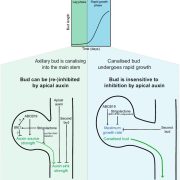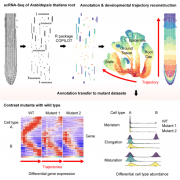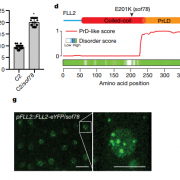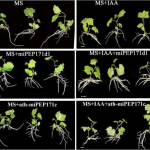Innovation, conservation, and repurposing of gene function in plant root cell type development (bioRxiv)
 Roots have many specialized cells arranged in concentric circles that are functionally homologous among various plant species but with varying cell-type-specific developmental programs. To further understand these developmental programs, Kajala et al. performed TRAPseq (Translating Ribosome Affinity Purification of mRNA coupled with sequencing) to determine differentially expressed translatomes in 12 different cell-types of tomato root. Additionally, the regulators involved in xylem cell differentiation were mapped between tomato and Arabidopsis to determine whether the cell-type regulatory networks are conserved between two different plant species. The author found some conserved transcription factor functions (like HD-ZIPIII), some partially conserved (VND) and some innovative (bZIP11) or repurposed (KNAT1). Root tissue-specific translatome was performed between rice, Arabidopsis, and tomato, which showed extensive meristematic zone similarity between these species with more variation for endodermis, vascular, and meristematic cortex tissue. The authors note that, like in animals, in plants there is a greater conservation amongst gene expression in early developmental stages as compared to differentiated tissues. (Summary by Sunita Pathak @psunita980) bioRxiv 10.1101/2020.04.09.017285
Roots have many specialized cells arranged in concentric circles that are functionally homologous among various plant species but with varying cell-type-specific developmental programs. To further understand these developmental programs, Kajala et al. performed TRAPseq (Translating Ribosome Affinity Purification of mRNA coupled with sequencing) to determine differentially expressed translatomes in 12 different cell-types of tomato root. Additionally, the regulators involved in xylem cell differentiation were mapped between tomato and Arabidopsis to determine whether the cell-type regulatory networks are conserved between two different plant species. The author found some conserved transcription factor functions (like HD-ZIPIII), some partially conserved (VND) and some innovative (bZIP11) or repurposed (KNAT1). Root tissue-specific translatome was performed between rice, Arabidopsis, and tomato, which showed extensive meristematic zone similarity between these species with more variation for endodermis, vascular, and meristematic cortex tissue. The authors note that, like in animals, in plants there is a greater conservation amongst gene expression in early developmental stages as compared to differentiated tissues. (Summary by Sunita Pathak @psunita980) bioRxiv 10.1101/2020.04.09.017285


